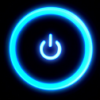So I've been checking out Pokemon's new commercial for their X and Y games coming out in October, and it's raised some questions for me about how they might be doing some of the stuff shown in the video (video is
">here).For example, I'm pretty sure that the pokemon in the battles are 3D models, but I do not see that much of any sort of polygonal look, and that black outline they put on the pokemon seem to make me feel like it has that "sprite" feel. What do you all think about this? How might you think they are doing this? I'm curious, and so I present this question.
Thanks.




